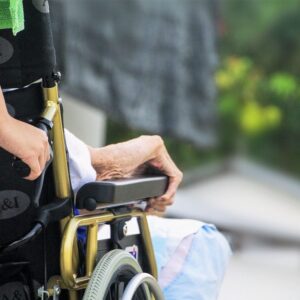Reducing Injury When Caring for a Loved One by Guest Blogger Chris Corpuz
March 9, 2017 | Caregiving, Client Stories, Prevention of Illness and Management of Chronic Conditions

One of the most common complaints among family members and caregivers is the frequency of injuries, and the chronic aches and pains they experience. Caring for someone with aging issues, chronic conditions, and other special needs is incredibly demanding. It takes a toll both physically and emotionally.
Reneu Health, Inc. recently had the pleasure of working with Windward Life Care to provide one client’s caregiver team with a personalized, hands-on training in proper body mechanics and transfer safety. This client requires significant assistance with transfers and uses specialized lift equipment; ensuring the proper use of this equipment, as well as the safety of the client and caregivers were the goals. Over the course of 2 sessions, we practiced techniques that Home Care Aides apply daily.
Using proper technique is critical for caregivers to avoid injuring themselves and the person they are helping. Following very simple techniques, you will significantly reduce the stress you put on your body while caring for a client or loved one.
Basic body mechanics:
- Practice proper “squat” technique by keeping your back straight while bending at the knees and hips. Look straight ahead to protect your neck and keep proper spinal alignment.
- Always keep your body as close as possible to the person or object you are trying to move. Don’t reach out or over to try to lift weight. This puts too much stress on the joints.
- Remember that your “core” or midsection is your center of gravity. This is the strongest point during a transfer or lift. The more you move away from your center of gravity, the more risk increases for injury.
Transfers:
- Explain what you are going to do before you do it. Give step by step instructions to the person you intend to transfer. Sometimes a simple miscommunication leads to injury for one or both of you. When working with dementia, consider using the same cues every single time you give instructions. This helps to clarify instructions for individuals who are easily confused.
- Set up everything you need before proceeding. Make sure the area around you is safe and free of clutter that you may trip on. If transferring from a wheelchair, for example, make sure the chair is locked and positioned optimally. The surface you are transferring to should be stable and angled for a successful transfer.
– article written by guest blogger: Chris Corpuz, CSCS
Reneu Health, Inc. provides at home, one-on-one activity based programs for seniors and special populations. We specialize in both preventive and rehabilitative care. Each program is specifically designed to meet your needs, and is appropriate for all levels of ability. We also work with companies like Windward Life Care to provide individual and group safety training in the comfort of your home or office.www.reneu-health.com

